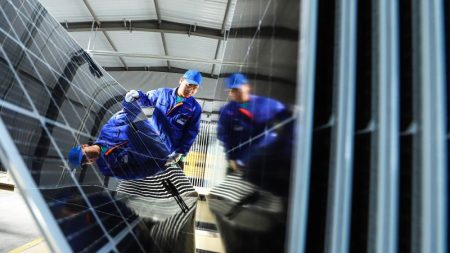The National Highway Traffic Safety Administration (NHTSA) is currently investigating Ford’s BlueCruise driver assistance system following two separate collisions involving Ford Mustang Mach-E vehicles that resulted in three fatalities and two injuries. The collisions occurred during nighttime lighting conditions, and the initial investigation confirmed that the BlueCruise system was engaged in the vehicles prior to the crashes. Regulators will be evaluating the system’s dynamic driving task and driver monitoring capabilities in light of these incidents.
Ford’s BlueCruise system, which was introduced in 2021, can only be activated on certain roadways and includes a camera-based driver monitoring system to ensure attentiveness. Ford has made it clear that the system is not fully autonomous. This investigation into the BlueCruise system comes at a time when autopilot technologies are facing increased regulatory scrutiny, particularly with regards to Tesla’s Autopilot system. The NHTSA has opened separate investigations into the Ford Mach-E crashes that occurred on February 24 and March 3, with the fatal February collision being the first known crash involving Ford’s driver assistance technology to draw attention from federal regulators.
In response to the NHTSA’s investigation, Ford has stated that they are cooperating with the agency to support the ongoing investigation into the BlueCruise system. Meanwhile, the NHTSA recently announced a probe into Tesla’s handling of an Autopilot system-based recall, focusing on whether the electric vehicle manufacturer appropriately addressed a December recall of over 2 million vehicles to address an error in the Autopilot system. The increasing scrutiny on driver assistance systems highlights the importance of ensuring the safety and effectiveness of these technologies as they become more prevalent in newer vehicles on the road.
The investigations into the Ford Mach-E crashes and Tesla’s handling of their Autopilot system recall reflect the growing concerns surrounding the safety and reliability of driver assistance technologies. By evaluating the BlueCruise system’s capabilities and monitoring features, the NHTSA aims to ensure that these systems operate in a way that prioritizes the safety of drivers and passengers on the road. As autopilot technologies continue to advance and become more widespread in the automotive industry, it is crucial for regulators to closely examine these systems to prevent future accidents and fatalities caused by malfunctions or human errors while using these features.
As more vehicles are equipped with driver assistance systems, including Ford’s BlueCruise and Tesla’s Autopilot, regulators will need to stay vigilant in monitoring the safety and performance of these technologies. The recent fatal crashes involving Ford Mach-E vehicles have sparked investigations into the BlueCruise system, highlighting the need for thorough evaluation of these systems before they are widely adopted. By working closely with automakers and regulatory agencies, the hope is to improve the safety and reliability of driver assistance technologies to prevent future accidents and tragedies on the road.















